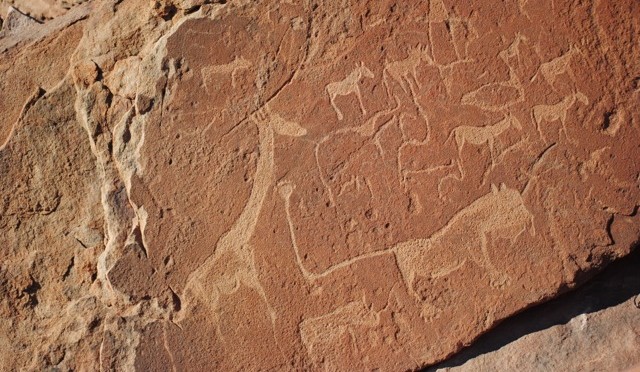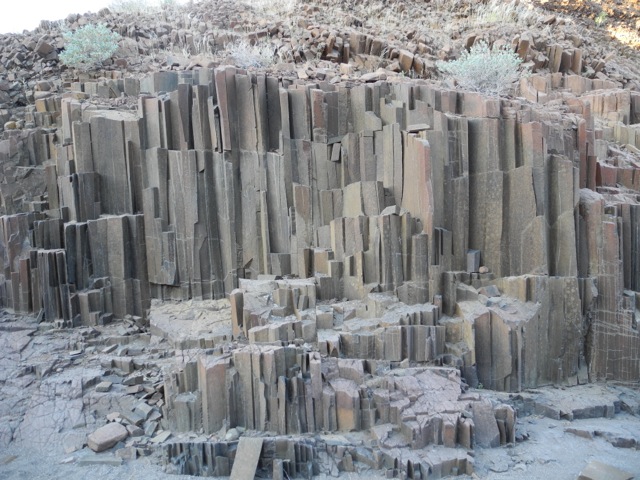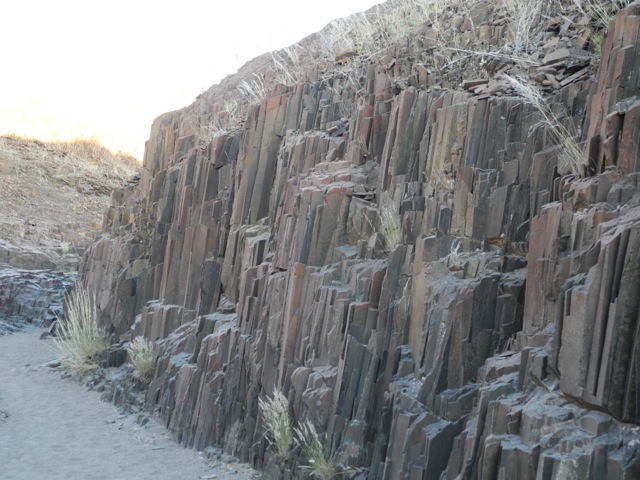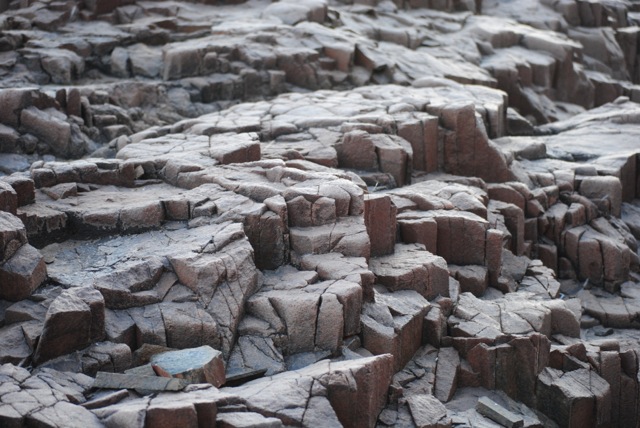The scenery on our drive through Damaraland and over Grootberg Pass from Hoada Campsite to our next campsite was stunning, and we stopped several times along the way to marvel at it (and, once, at a scorpion that was crossing the road).
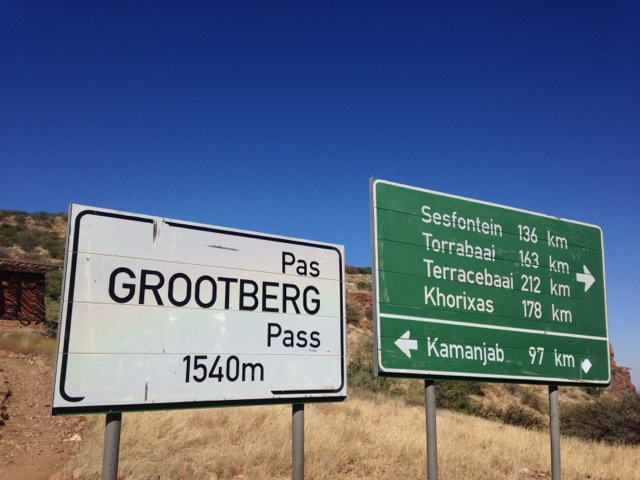
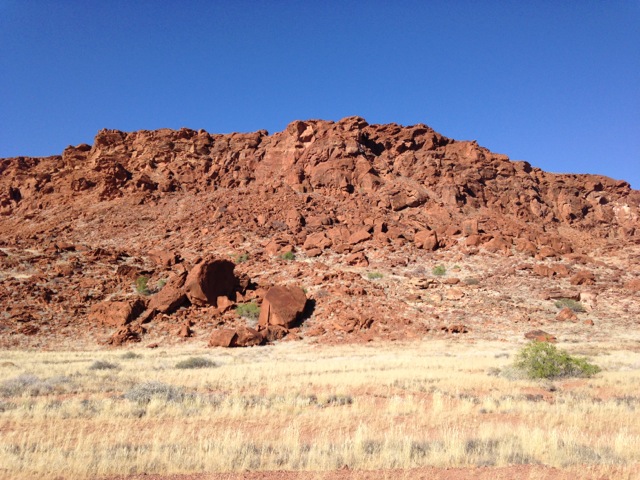
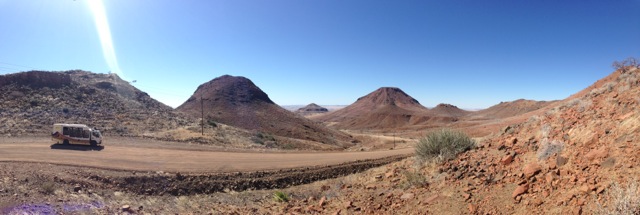
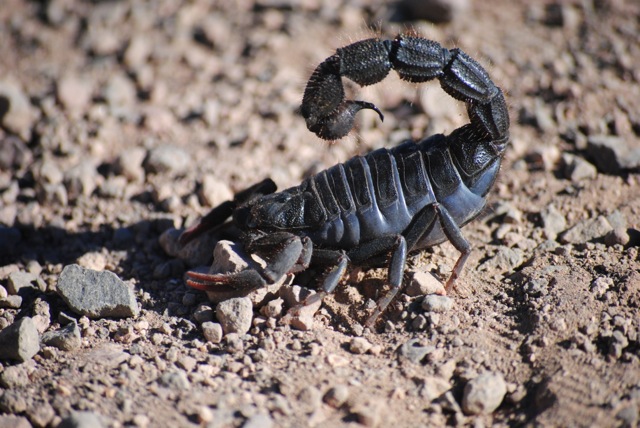
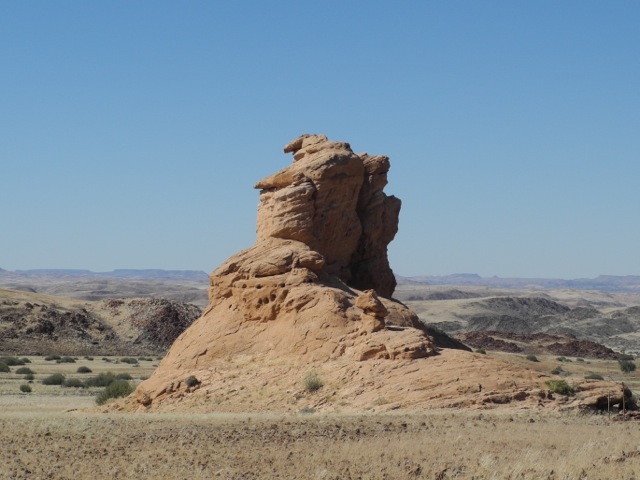
After setting up at Aba Huab Camp, also known as the Ninth Circle of Hell (see infra), we set out for Twyfelfontein, Burnt Mountain, and the Organ Pipes.
Twyfelfontein Rock Engravings
According to our guidebook, Twyfelftontein “is one of the most extensive rock-art galleries on the continent.” Designated as an UNESCO World Heritage site in 2007, it was the first location in Namibia to be awarded such distinction.
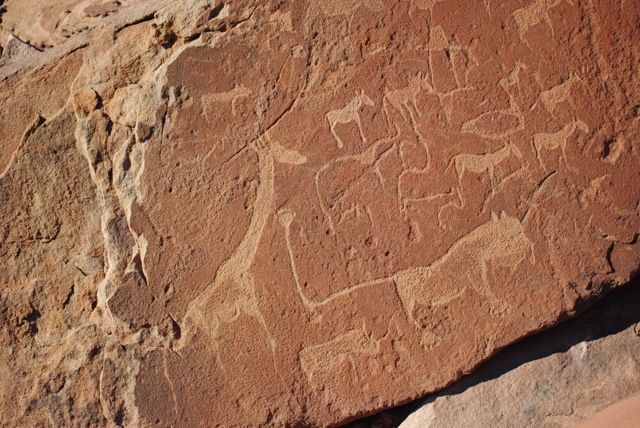
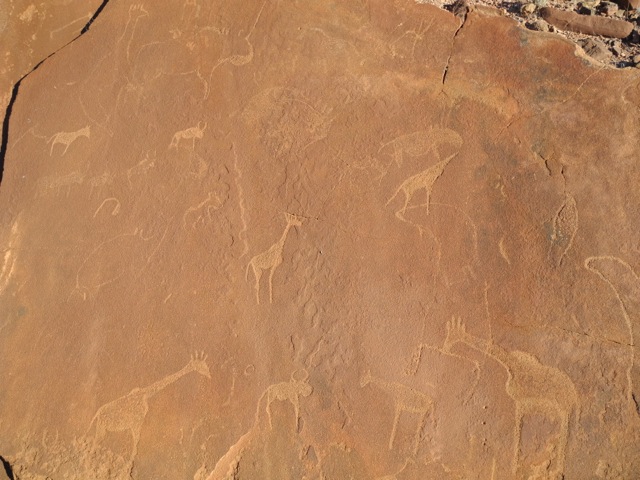
In my ignorance, I had thought that rock art was just that: art. I had assumed that the San people1 (to whom the rock engravings at Twyfelfontein are attributed) created the rock art either to beautify their surroundings or for story-telling purposes.
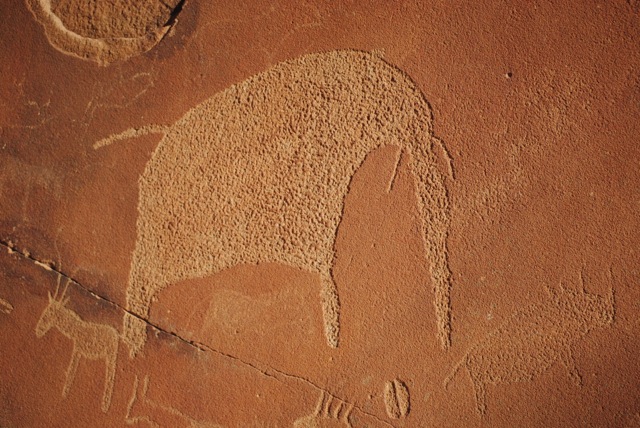
Not so, our guide explained. The rock art actually served useful functions. Some of the art were in fact maps, and some listed the types of animals that could be found nearby, helpful for both hunting and self-preservation.
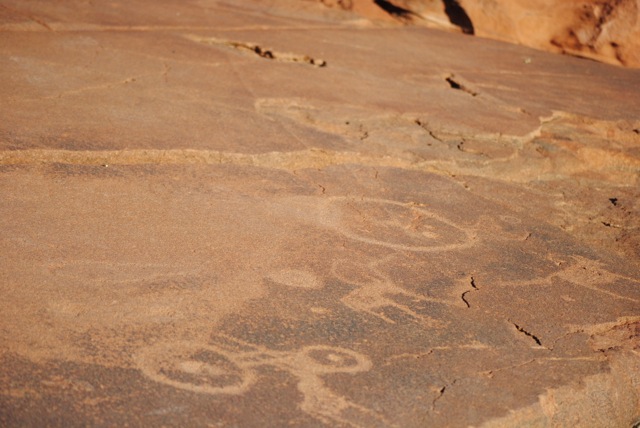
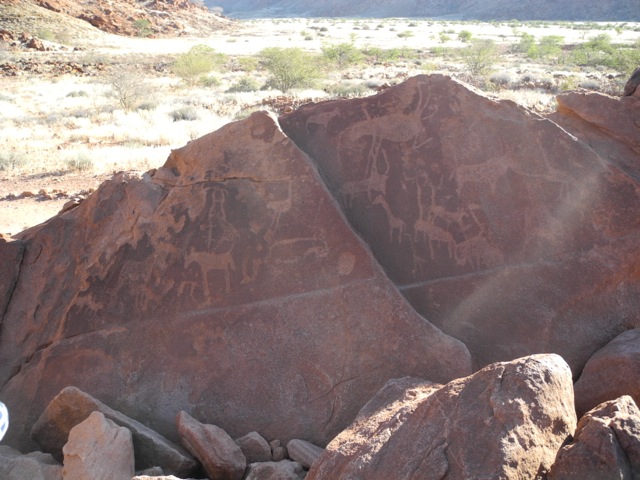
Burnt Mountain
After we left the rock engravings, we visited the Burnt Mountain, a volcanic ridge that appears to have literally been burned. Climbing on Burnt Mountain isn’t permitted, so we admired it from the ground.
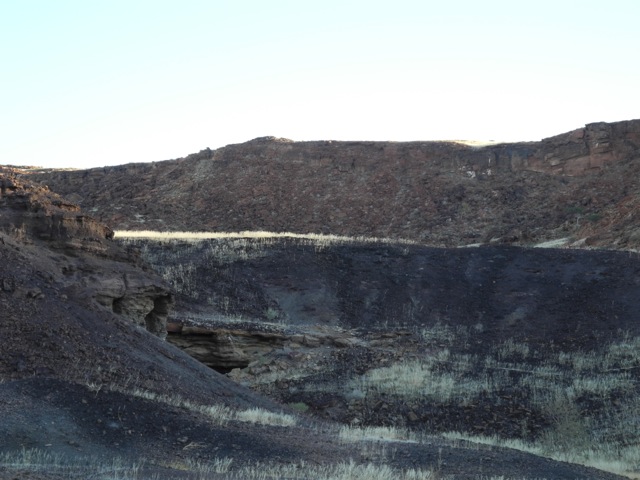
The Organ Pipes
Not far from the Burnt Mountain is a series of dolerite columns known as the Organ Pipes. Although I had been unimpressed at the description of the Organ Pipes, once we were there, I found them fascinating. I had never seen anything like them before. Here are some random shots we captured as the sun faded:
Where We Stayed:
☆ Aba Huab Camp. Zero goats. (Seriously, that camp does not deserve one single goat.) There was no electricity at our campsite, and the lack of electricity was not a rustic quirk: the electricity simply didn’t work, although the camp insisted that it did and strung a lengthy extension cord out to our campsite. The bathroom facilities were dismal: there was no lock on the door of the men’s toilet stall (which opened up directly into the camp’s bar), the one unlit, semi-nice shower had no way of regulating the hot water (there was a knob for cold water, but it didn’t seem to be attached to anything), and, when I twisted the knob in one of the other showers, ants rained down me. To top it off, one of our campmates witnessed raw sewage backing up out of one of the camp’s drains.
1 A future post will be provide more coverage on the San people.

